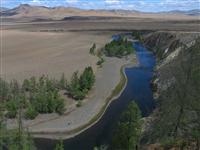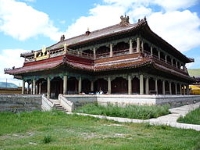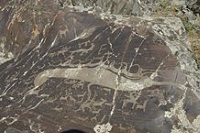Country guides

Things to do in Mongolia
There are few tarred roads in this rugged destination and the main urban centre, Ulaanbaatar, is small, meaning visitors shouldn't expect modern luxury. Rather, adventure seekers can expect a natural beauty that is unaffected by the bustle, stress and pollution of modern life. Every journey through the wilderness here is an adventure into remote territory.
Mongolia is famous for its landscape, particularly the ice-capped peaks of Bayan-Olgii, the roaring river mouth at the Yolyn Am, the surreal white limestone cliffs at Tsagaan Suvarga and the lush lakes in the Khuisiin Naiman Nuur Nature Reserve. Most tourists come in the summer, whether for hunting, fishing, horse riding or trekking,
A visit to Mongolia is incomplete without accepting local hospitality and experiencing its traditions. The famous Nomadic lifestyle of the Mongols exists as part of everyday life, and the friendly people are proud to share their customs and heritage.

Orkhon Valley Cultural Landscape
The Orkhon Valley Cultural Landscape is located in central Mongolia, about 225 miles (360km) west of the capital Ulaanbaatar. This fascinating area was inscribed in UNESCO's list o…
Orkhon Valley Cultural Landscape
The Orkhon Valley Cultural Landscape is located in central Mongolia, about 225 miles (360km) west of the capital Ulaanbaatar. This fascinating area was inscribed in UNESCO's list of World Heritage Sites in 2004, lauded as a living exhibit of nomadic pastoral traditions dating back well over two millennia. The trip to the site through the desolate interior is a pleasure in and of itself, but the crowning jewel of the region is the ruins of Karakorum, the historical centre of the Mongol Empire under Genghis Kahn. Once the most powerful and wide-reaching empire in the world, visitors to the Orkhon Valley will have the opportunity to explore the possible ruins of the famed Xanadu Palace.

Amarbayasgalant Monastery
The Amarbayasgalant Monastery (the 'Monastery of Tranquil Felicity') is one of the few Buddhist temple complexes in Mongolia that wasn't completely destroyed by the Soviets in 1937…
Amarbayasgalant Monastery
The Amarbayasgalant Monastery (the 'Monastery of Tranquil Felicity') is one of the few Buddhist temple complexes in Mongolia that wasn't completely destroyed by the Soviets in 1937. Located in Mongolia's northern province of Selenge, the monastery is situated in a beautiful and unusually fertile valley, in the shadows of the sheer cliffs of Mount Burenkhan. The monastery itself was built between 1727 and 1736 and conforms to a Chinese style of architecture characterised by intricate symmetrical patterns. It is surrounded by wild plains and cherry groves and, most interestingly, scattered among the cherry trees are Turkic-era graves of various geometric shapes, dating back to the 3rd century.

Petroglyphic Complexes of the Mongolian Altai
The Petroglyphic Complexes are home to the largest, best-preserved and oldest collection of rock art in north Asia, and the petroglyphs themselves document over 12,000 years of Mon…
Petroglyphic Complexes of the Mongolian Altai
The Petroglyphic Complexes are home to the largest, best-preserved and oldest collection of rock art in north Asia, and the petroglyphs themselves document over 12,000 years of Mongolian culture. The earliest images date from the Late Pleistocene era (about 10,000 BC), and depict a cultural landscape where the surrounding valleys provided a habitat for hunters of big game. Fascinatingly, the rock art images then extend into the Scythian and Turkic Periods, and show the transition firstly to a herding culture, and then to the horse-dependent, nomadic kind of lifestyle for which Mongolia is famous. A UNESCO World Heritage Site, the Petroglyphic Complexes of the Mongolian Altai provide visitors with an enthralling and authentic cross-section of 12 millennia of Mongolia's history.


